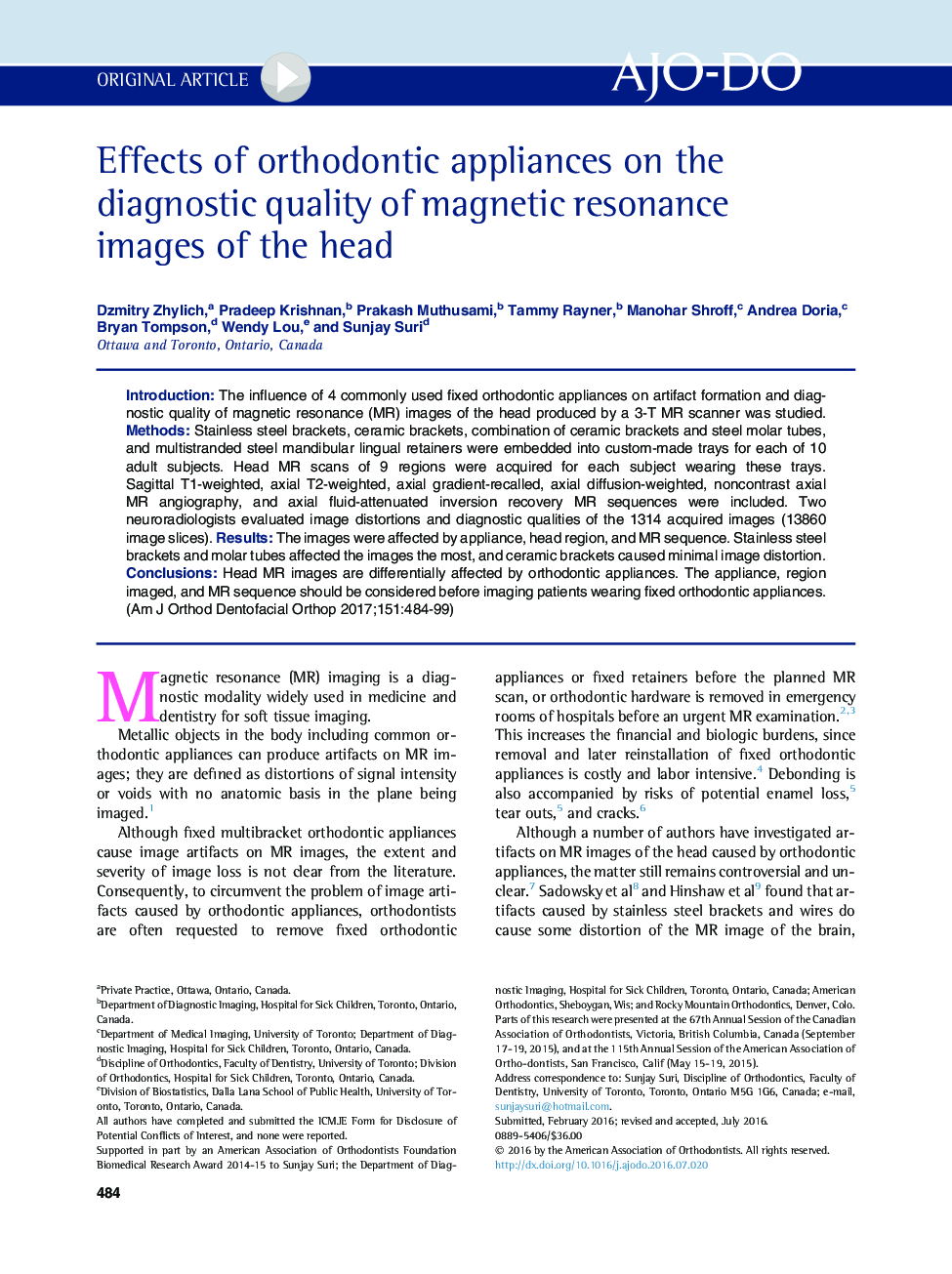| Article ID | Journal | Published Year | Pages | File Type |
|---|---|---|---|---|
| 5637717 | American Journal of Orthodontics and Dentofacial Orthopedics | 2017 | 16 Pages |
â¢Effects of common fixed orthodontic appliance attachments on the quality of MR images were studied.â¢Of all attachments tested, those made of steel worsened the quality of MR images the most.â¢Ceramic brackets caused negligible effects on image quality.â¢Images were differentially affected with different MR sequences.â¢Images of different regions of the head were affected differentially.
IntroductionThe influence of 4 commonly used fixed orthodontic appliances on artifact formation and diagnostic quality of magnetic resonance (MR) images of the head produced by a 3-T MR scanner was studied.MethodsStainless steel brackets, ceramic brackets, combination of ceramic brackets and steel molar tubes, and multistranded steel mandibular lingual retainers were embedded into custom-made trays for each of 10 adult subjects. Head MR scans of 9 regions were acquired for each subject wearing these trays. Sagittal T1-weighted, axial T2-weighted, axial gradient-recalled, axial diffusion-weighted, noncontrast axial MR angiography, and axial fluid-attenuated inversion recovery MR sequences were included. Two neuroradiologists evaluated image distortions and diagnostic qualities of the 1314 acquired images (13860 image slices).ResultsThe images were affected by appliance, head region, and MR sequence. Stainless steel brackets and molar tubes affected the images the most, and ceramic brackets caused minimal image distortion.ConclusionsHead MR images are differentially affected by orthodontic appliances. The appliance, region imaged, and MR sequence should be considered before imaging patients wearing fixed orthodontic appliances.
